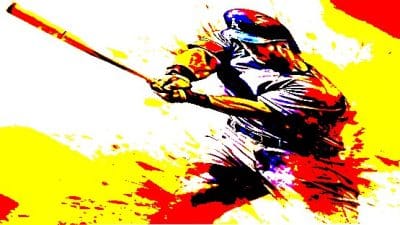
At the moment, nothing was clear about what might have happened. Was this a live shooter situation with more victims than what was then known? Was there a perpetrator on the loose who was a danger to the public?
Nobody was on social media then decrying the saturation coverage. That would come later.
Overnight Wednesday into Thursday, we learned the identities of the two who had died in the shootings, Jasmine C. Hayslett, 19, and Zachary A. Ham, also 19, that Hayslett had been dead of apparent gunshot wounds in a vehicle parked on Cherry Hill Drive, and that Ham had been found dead in a nearby residence of an apparent self-inflicted gunshot wound.
The Staunton Police Department indicated that it was not seeking other suspects in the murder of Hayslett.
Case closed.
There would be two other tidbits from local law enforcement that would add to the story. One came from the Staunton Police Department and the Augusta County Sheriff’s Office, which reported on Friday that it had been determined that Hayslett had been shot in Stuarts Draft.
The second came from Waynesboro, where it was revealed on Friday that Ham had been charged with domestic assault on Sept. 22, with the police report on the arrest indicating that Hayslett had told police that Ham had threatened to kill her.
Further reporting on the arrest and charges indicated that a protective order had been entered against Ham barring him from having contact with Hayslett, and that under Virginia law Ham would have then been prohibited from possessing any type of firearm while under that protective order.
A few are calling the reporting on this level of information about the shootings sensational, but the bulk of the online critics are pointing to a feature produced by the News Leader chronicling the response of the Ham family to the tragedy.
The feature and a related video piece covering the story crossed the line, to some, and opened the floodgates as critics have taken to the News Leader’s Facebook page to castigate the paper for engaging in sensationalism and callously trying to profit off the tragedy.
Is that criticism fair, and if so, where is the line in covering a story like this one? Is it at the first point of information, that the shooting was considered a murder-suicide, that there was no further danger to the public because the perpetrator was also deceased? Or the second point of information on the story, that the victim had sought and received a protective order that failed to live up to its name, raising questions about the efficacy of protective orders, and what victims of domestic violence can do to protect themselves?
Is the third layer of coverage that we’ve seen in this story, the effort at humanizing the victim and perpetrator, and their families, itself even a line, and if there is a line here, where do we draw it? Is it also sensationalizing the story to cover candlelight vigils and crowdfunding efforts to assist the couple’s young son, for example, or is that also an invasion of privacy as a strict application of the standards offered by the most vocal of the social media critics, that any reporting on the story outside of the bare facts of what happened Wednesday night, would seem to enforce?
There is no easy answer to this, or a necessarily right answer.
Augusta Free Press has focused its limited coverage of the story to the available public information related to the details of the shooting and the ongoing investigation.
We’re not saying that this is the right approach, or that the more comprehensive approaches taken by other local news organizations is the wrong approach; it’s just our approach, driven as much by a lack of staff resources to commit to the in-depth coverage that would be required to tell the broader story right as anything else.
Even with our low-key approach, the stories that we have reported have generated noticeable traffic to the AFP website: as of the publication of this story, they have generated just short of 4,000 page views, and one of the stories is #3 on our list to top 10 most-read stories for the week.
For perspective on what that means in terms of overall web traffic on Augusta Free Press, though, that’s four-tenths of 1 percent of the page views that we’ve had this week.
It’s a myth that any one story drives the business, in other words.
One story has legs for a few days, for sure, but newspapers, TV news operations and news websites are 24/7/365 operations, and the money flows in by and large because advertisers have things to sell, and use media products, in the form of the paper, the 6 o’clock news and their associated websites, to sell them.
The advertisers that pay the bills need traffic every day, not just whenever there’s big news.
The papers can make a relative few extra bucks off a single big story if that story sells more papers out of the sidewalk boxes and at the local 7-Eleven, but circulation revenue is anchored down to the subscriber base.
It would be interesting to see how the News Leader has done in terms of its online subscriber numbers the past few days. The paper’s website allows visitors to access a limited number of stories online for free before closing off access pending an online subscription. It would be expected that a big story like the coverage of the murder-suicide could generate a bump in online subscriptions, though how much of a bump, and how long it would last, would be left to question.
And of course, whatever short-term bump in online subscriptions and off-the-rack print sales there might be would be the direct result of public interest in the story.
Which is to say, the newspaper would be doing what any other business would be expected to do, producing something that the public has some demand for.
And there is demand for more information on this story. It’s human nature to be drawn to want to know more about these kinds of tragedies: the details of what happened, and behind what happened, and given the previous very recent history of violence, how it was that the system failed the victim.
Is it sensationalism to commit a considerable amount of staff resources to try to tell that broader story?
Obviously it is, but not in the negative sense that the critics have tried to play it.
Because media also sensationalize high school football, and Donald Trump, and the Kardashians, and countless other things that we want to know more about.
If you’re inclined to criticize the sensationalism, you’re actually better served to focus your criticism on making sure that some good comes of it.
Demand, in the case of the coverage of this murder-suicide, more reporting on domestic violence, the limitations of protective orders, the role that family, friends, co-workers can play in helping repair broken relationships.
We’ll find something else to get fixated on in short order, and the papers, TV news and online news sources, doing what they do well, will continue make money telling us about it.
As long as more people are paying attention, let’s have the media do something positive with it.
– Column by Chris Graham










